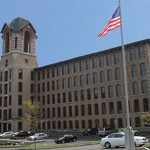The basic premise behind a receivership is to vest the court with statutory and/or inherent equitable power over an asset in order to preserve and ultimately maximize the value of the asset for the benefit of its stakeholders in the receivership process. Those stakeholders can be secured and unsecured creditors, equity holders and in certain circumstances, representative public interest. Often times the asset in the receivership process includes real property.
The primary role of a receiver is to take the steps necessary to preserve and maximize the value of the assets of the receivership estate. When working with a real estate project, accomplishing this goal typically involves developing a creative marketing and sale approach. The strategies can include: securing entitlements or eliminating impediments which may not otherwise be feasible outside of the receivership process; negotiating difficult transactional issues between parties; and/or repositioning an asset in a manner that will allow it to be sold for the most value.
One example includes Anthony Mill in Coventry, R.I. which was a 185,000 s/f mill building built in the mid-1800s. Under a court-supervised receivership process, the receivership reached agreement with the town of Coventry relative to sewer impact fees, to restructure property tax assessments and to secure approval of a Tax Increment Financing plan. These steps made the re-development of the project not only feasible but attractive to the marketplace. As a result, the property was sold within 11 months and Anthony Mill is now fully developed as 122 luxury apartments.
Another recent example is Lippitt Mill in West Warwick, R.I., which is a 65,000 s/f mill that was one of the oldest operating mills in the U.S., until it ceased operations in 2010. The receivership secured historic tax credits and a tax stabilization agreement, reached accord with the town of West Warwick to subdivide the project into two phases, and worked with the R.I. Department of Environmental Management to address an environmental land use restriction that would have prevented re-development. The project sold within 11 months and the current owner is now finalizing its construction financing to develop a first phase of approximately 65 residential units.
What these examples show is that the court-supervised process fosters a team approach between the court-appointed receiver and the regulators at both state and local levels, to creatively unravel and solve problems in an expedited timeframe devoid of politics.
A general misconception is that a receivership or similar court-supervised proceeding is purely an insolvency driven process. While this can be the case, there is a trend where people are exploring the flexibility of the process to prevent the wasting of assets including resurrecting stalled/failed real estate development projects. In situations where a real estate project is environmentally impacted, has lost an approval or entitlement, or is subject to litigation between competing interests, the receivership process is an effective alternative to maximize the value of the project, while working through the impediments to development.
John Dorsey, esq., is an attorney with Ferrucci Russo P.C., Providence, R.I.











